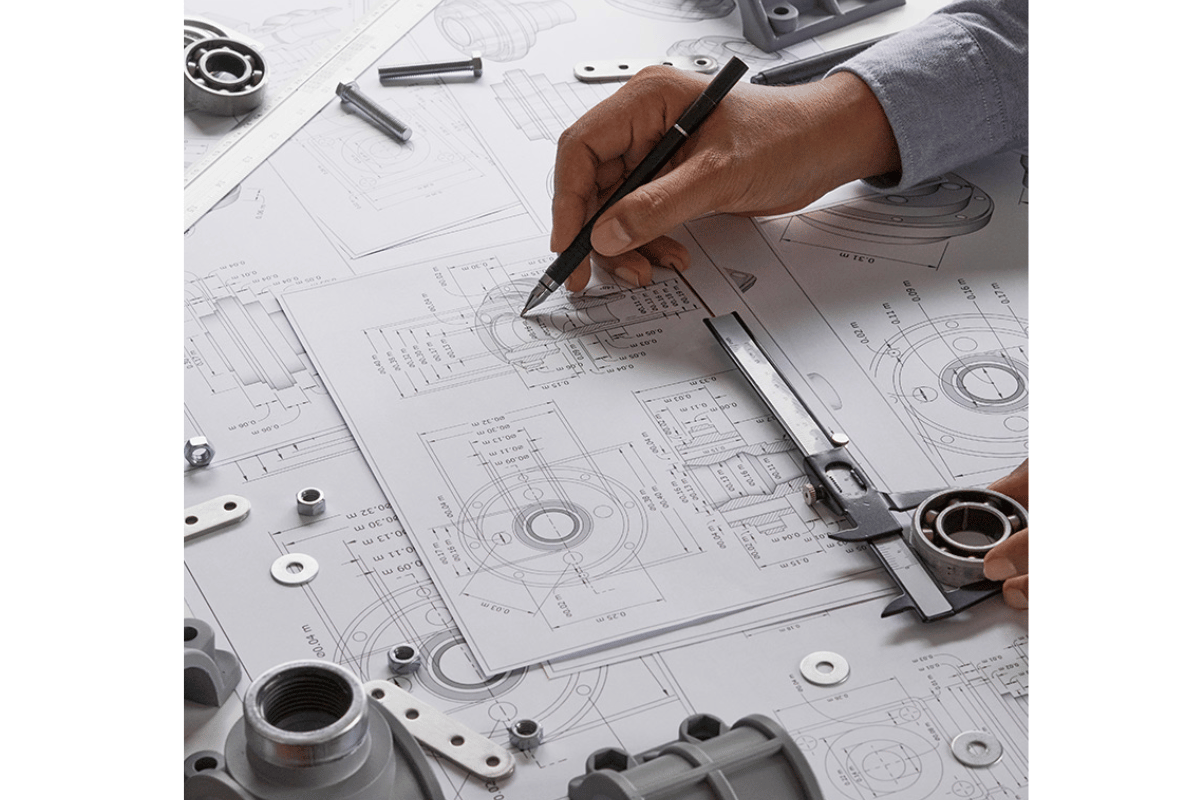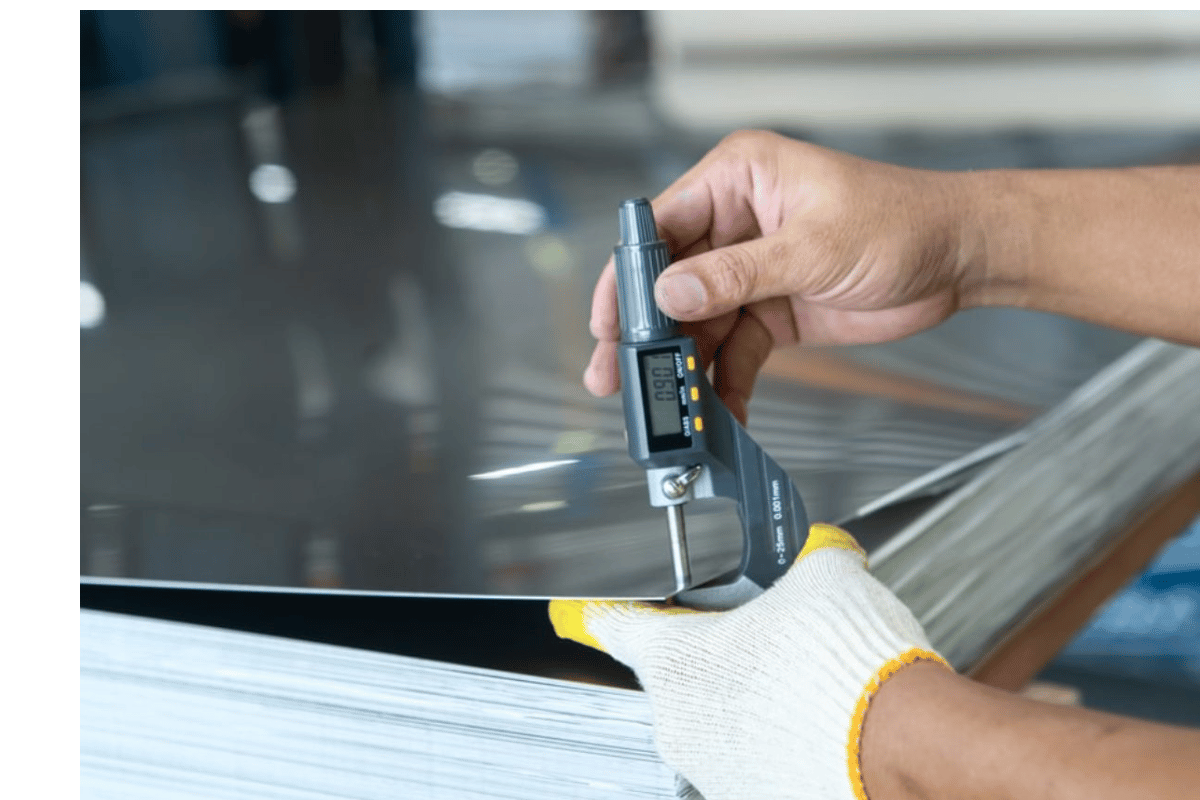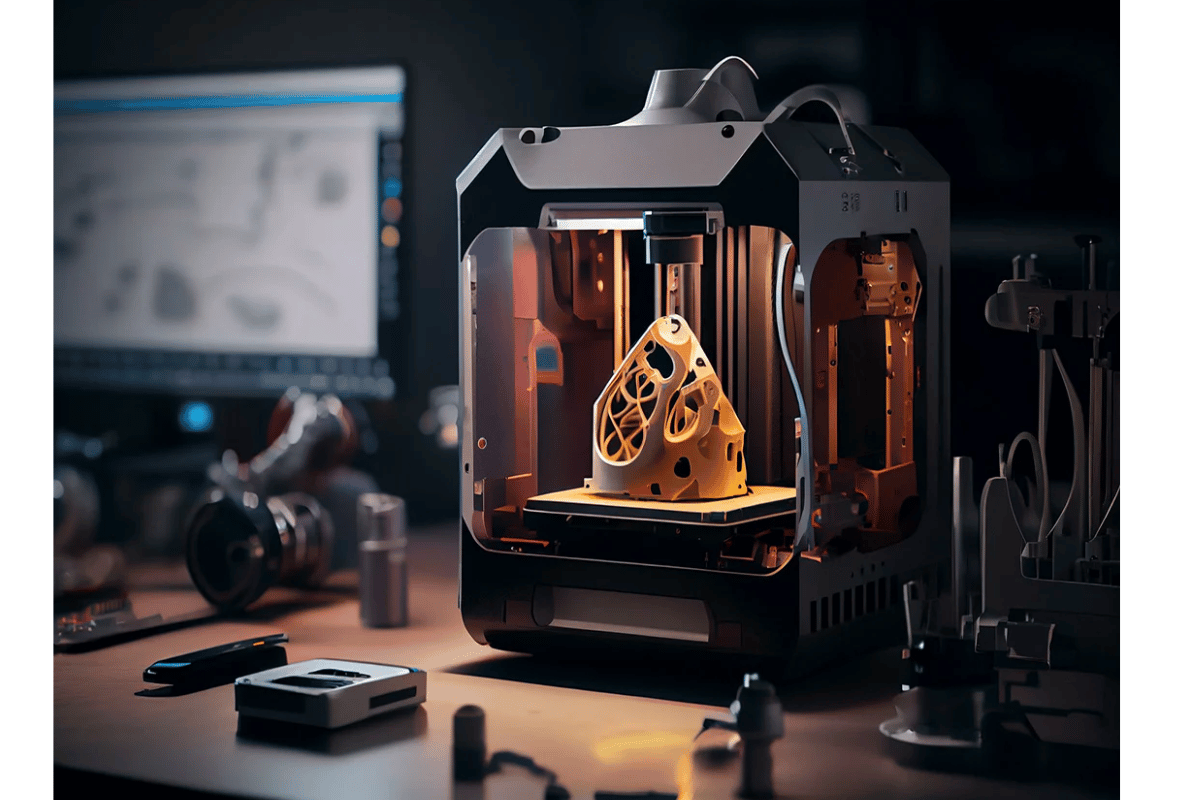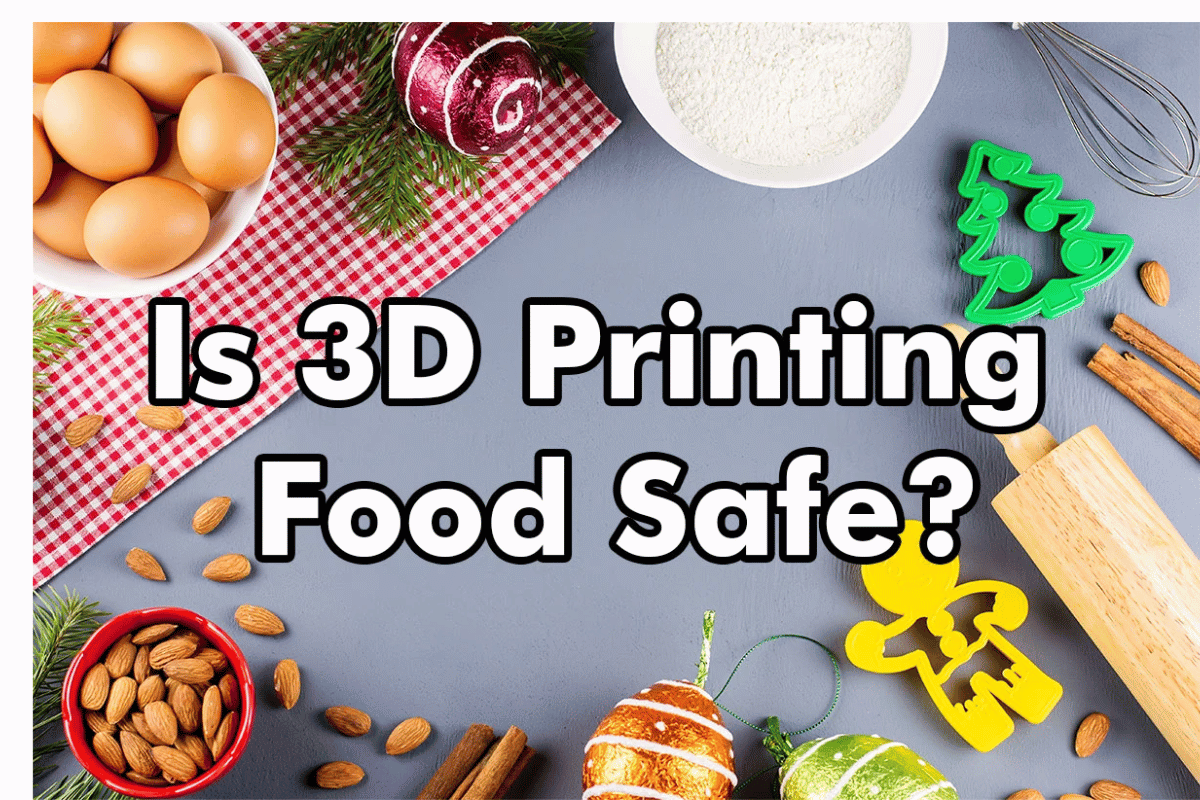Among 3D printing technologies, Fused Deposition Modeling (FDM) and Stereolithography (SLA) are the most widely used. These methods have different strengths and are applied in various fields because of their unique advantages. This article seeks to answer one important question: which method between FDM and SLA gives more strength to printed objects? Real-world applications, material properties, as well as printing techniques will be examined so that a detailed comparison can be made which shows where each method excels or falls short. If you want your prints to last longer as an amateur or need something stronger for industrial purposes then this manual is guaranteed to provide some helpful hints regardless of whether you’re doing it yourself or getting paid for professional work like me.
What Are FDM and SLA Printing Technologies?
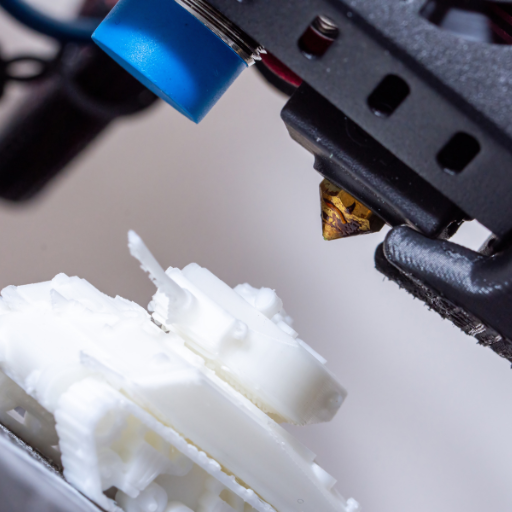
Fused Deposition Modeling (FDM): This is a 3D printing process that is done by pushing the heated nozzle through thermoplastic filaments, layer by layer, to make an object. It is popular for being cheap and easy to use; it can work with different materials such as ABS, PLA or PETG. FDM is widely used for prototyping, hobbyist projects and functional parts which do not need very high precision or fine details.
Stereolithography (SLA): On the other hand, SLA uses a photosensitive resin that gets cured by a UV laser or light source. This allows for very high resolution prints with smooth surfaces and fine details. SLA finds common applications in industries like dental, jewelry making and medicine where accuracy is paramount; thanks to its ability of producing highly accurate and complex geometries.
Understanding FDM: Fused Deposition Modeling
Printing Process: Fused Deposition Modeling (FDM) works by warming thermoplastic filament until it can be extruded through a small nozzle in both the horizontal and vertical axes. The printer lays down the filament layer by layer to create the final piece. This process begins with a digital 3D model that is sliced into thin layers by software to give instructions to the printer.
Advantages: FDM is lauded for being an affordable option that can also do many different things. ABS, PLA, PETG, and other materials used are relatively cheap so anyone from hobbyist to professional can get involved. These printers are also great because they require little maintenance and are easy to use which means they have a quick setup time.
Properties of Materials: On the whole, FDM materials have good strength and durability characteristics. However this changes depending on what kind of filament you’re using so there’s more variation with mechanical properties than might be expected. For example ABS has a reputation for being strong as well as withstanding high temperatures; while PLA is easier to print with but not nearly as tough since it biodegrades easily too.
Uses: As an incredibly versatile technology FDM can be applied across many fields. It is often used during prototyping where both cost & speed matter most; however functional parts benefit greatly from being able accommodate different materials which are easy operate printers allow them function properly without any trouble educational purposes artistic projects provide great options that help diversify our lives.
Drawbacks: But like anything else there are downsides too – even though we love this stuff! There may still need extra steps taken after printing such as sanding or coating over visible lines caused by each layer being built up separately Another thing is that dimensional accuracy isn’t always spot-on plus resolution tends suffer slightly when compared slas.
How Does SLA Differ from FDM?
Stereolithography (SLA) and Fused Deposition Modeling (FDM) are similar in that they are both methods of 3D printing; however, the two have different processes and end results. In SLA, a photosensitive resin is cured layer by layer using ultraviolet light, resulting in highly detailed parts with smooth surface finishes. This technique offers more precision and better resolution than FDM.
On the other hand, FDM constructs objects by extruding melted thermoplastic filament one layer at a time. Although it is cheaper and can work with various materials, this procedure usually shows print lines between layers and has lower resolutions. SLA works best for applications requiring high accuracy such as dental models or jewelry making while FDM is often chosen for fast prototyping or affordable functional part production due to its ease-of-use capabilities.
Key Components in FDM and SLA Printers
FDM Printers:
- Extruder: The feeder is the part that directs the thermoplastic filament to the hot end. It contains a hot end and a cold end, with the former melting the filament for deposition while the latter pushes it forward.
- Build Platform: Otherwise known as print bed, this is where an object is built on. When heated, it can hold onto first few layers better and reduce warping.
- Motion System: Comprises rails and stepper motors that are responsible for controlling movement of both print head and build platform; ensures accuracy in positioning as well as layer alignment throughout printing process.
SLA Printers:
- Resin Tank: This reservoir holds liquid photopolymer resin which cures one layer at time. It often has clear bottom so that UV laser may cure resin through it.
- Build Platform: In SLA printers, this part is submerged within resin tank then incrementally lifted as component gets created.
- UV Laser: This laser is used to cure resin. It does this by directing accurate UV light onto intricate details or thin layers thereby solidifying them which contributes towards achieving higher resolution on SLA prints.
Every FDM printer along with its specialized processes also has different components from those found in any given SLA machine hence resulting into various applications and output qualities.
How Do FDM and SLA 3D Printers Work?
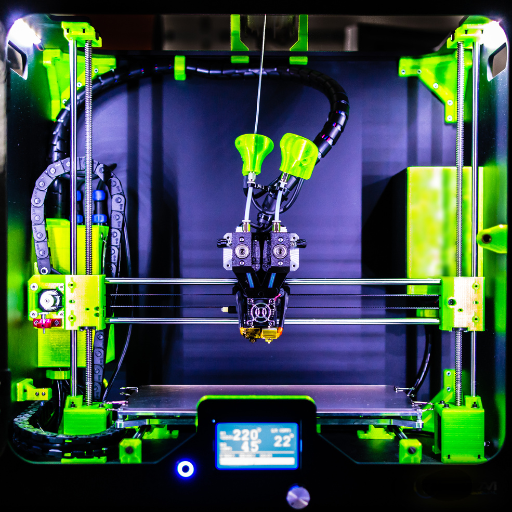
FDM and SLA 3D printers do not work in the same way to create three-dimensional objects.
FDM Printers: Fused Deposition Modeling (FDM) works by extruding a thermoplastic filament which is melted through a heated nozzle. The print head moves in multiple directions to deposit the melted filament layer by layer on a build platform where it cools and solidifies into the final object. The accuracy and strength of the output depend on the resolution of the printer as well as quality of filament used.
SLA Printers: Stereolithography (SLA) uses a liquid photopolymer resin that is cured by UV laser. The build platform starts at the bottom of a resin tank then gradually moves upwards; this allows curing of resin layer-by-layer from bottom-up using UV laser. The precision with which UV lasers operate makes them capable of high-resolution prints, able to capture fine details – thus making SLA suitable for smooth surface finishes or intricate designs.
In summary, Fused Deposition Modeling builds objects through depositing melted filaments while Stereolithography constructs them via curing liquid resins; each catering for different needs and applications within 3D printing sector.
FDM Printing Process Explained
To start the Fused Deposition Modeling (FDM) printing process, a digital 3D model is used. The 3D model is then sliced into layers with specific software. After this, the sliced file will be sent to the printer itself. For this printer, it uses a thermoplastic filament in which it will feed it through its nozzle heated up until it reaches melting point. Once melted, print head accurately places melted filament layer by layer onto build platform following path defined by digital model. Almost instantly each layer cools and solidifies so that next one can be added on top of that – build plate may move downwards incrementally with each new layer or print head may move upwards depending on design of the printer itself; supports are often used for overhanging structures but these will be removed after completion of printing; entire process repeats until whole 3D object gets constructed. It is widely adopted for prototyping as well as hobbyist projects due to its simplicity and low cost.
How SLA Printing Utilizes Laser Technology
Stereolithography (SLA) printing instead of using a UV laser to harden a liquid resin, uses the laser technology. At first, a tank filled with photopolymer resin is taken. Then, by means of galvanometers which are essentially a set of mirrors, the UV laser is guided to draw each sliced layer of the 3D model on top of the resin surface. Here, in the exposed regions the UV light starts off a chemical reaction which results into solidification of the resin. When one layer gets cured then build plate moves up and cures another one after tracing it out too; this process continues stepwise until completion for all layers forming an object together. The reason behind smooth surface finishes along with detailed prototypes being possible through SLA printing lies in its ability to achieve high resolutions thanks to accurate UV lasers which can also be used for complex engineering designs as well as dental models thereof made during this procedure.
Comparing Print Quality: FDM vs. SLA
Comparing FDM and SLA’s print quality reveals several glaring differences. By printing melted filament layer by layer, Fused Deposition Modeling produces less detailed and rougher surface finishes which may have visible layer lines and lower resolution thus making it suitable for bigger less intricate prototypes and hobbyist projects. Conversely, Stereolithography or SLA is good at creating smooth surfaced high-resolution prints. In SLA, the UV laser used can achieve fine details as well as complex geometries hence its best suited for dental models among other applications that require precision and complexity in design such as detailed engineering designs. Generally speaking while being cost-effective and widely accessible FDM still falls short of providing quality prints especially when it comes down to finer parts manufacturing where accuracy should be paramount unlike with SLAs which give better results for intricate objects since they are also able to deliver them with much higher levels of detail too.
What Materials Are Used in FDM vs. SLA?
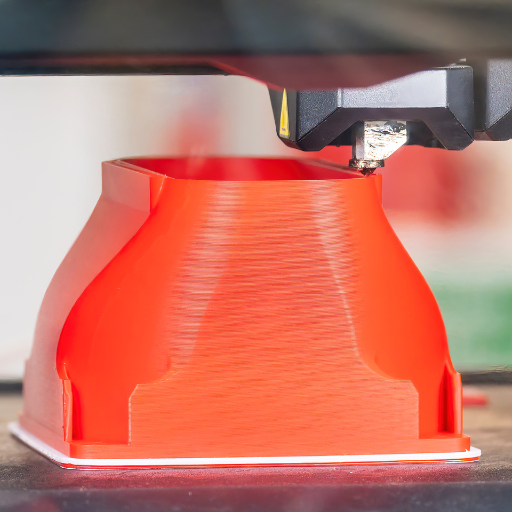
FDM, which is known as Fused Deposition Modeling, mainly uses thermoplastic materials that are typically PLA (Polylactic Acid) and ABS (Acrylonitrile Butadiene Styrene) being the most popular. Thermoplastics are sold in filament forms and this offers a good combination of strength, price as well as ease of use. Apart from that, there are also other special filaments such as PETG, nylon or TPU (Thermoplastic Polyurethane) which are used for particular applications that need chemical resistance, durability or flexibility.
On the contrary, SLA also called Stereolithography utilizes photopolymer resins that turn solid when exposed to UV light. These resins come in different types including standard resins, high temperature resistant ones, flexible ones and even castable resins which can be used for lost-wax casting processes. Each type of resin has its own unique properties so as to meet various needs such as thermal resistance; ability to produce fine details; being flexible or elastic among others.
Exploring FDM Filaments
Various types of FDM filaments are available; each has particular uses and unique attributes. PLA (Polylactic Acid) is the most commonly used FDM filament which is appreciated for being beginner-friendly, eco-friendly as well as having low warping tendencies. Furthermore, it is ideal for general 3D printing purposes. Another frequently employed filament is ABS (Acrylonitrile Butadiene Styrene), known for its toughness, durability and heat resistance that makes it suitable for functional parts and prototypes. PETG (Polyethylene Terephthalate Glycol) combines properties of both PLA and ABS such that it offers strength with flexibility alongside chemical resistance while being most preferred material for mechanical parts especially those meant for food contact applications. Besides these there exist other speciality filaments like nylon which gives high strength along with wear resistance ; TPU (Thermoplastic Polyurethane) gives elasticity when printed into objects such as phone cases or shoe soles ; wood-filled or metal filled composites can be used to achieve aesthetic or custom finishes among others.
SLA Resin Properties
SLA (Stereolithography) uses photopolymer resins that come with a range of different properties to serve various purposes. Ordinary resins give a polished surface finish and high resolution, so they’re perfect for visual models and intricate prototypes. High-temperature resins are designed to withstand elevated temperatures, which makes them suitable for applications requiring thermal resistance. Flexible resins have elasticity – they can bend or compress without snapping – so they’re great for creating parts that need to be flexible or shock-absorbent. Castable resins burn out cleanly, leaving behind accurate molds for metal casting projects; these are created by SLA printers too! Because of this fact alone does each type of resin used in SLA add range and specificity to 3D printing capabilities across industries.
Material Properties: SLA and FDM
When it comes to comparing the material properties of Stereolithography (SLA) and Fused Deposition Modelling (FDM) 3D printing technologies, a number of differences stand out as well as advantages.
SLA Advantages:
- Surface Finish: Printed objects created with this method have smooth surfaces which makes them look more polished than those made using FDM. The resolution is also higher hence good for detailed prototypes and complex designs.
- Detail and Precision: Laser technology used in this technique allows for fine details to be achieved that cannot be realized with other methods such as FDM where layers are stacked on top of each other until an object is formed.
- Material Properties: SLA resins come in different types including flexible ones, those with high temperature resistance or even castable ones among others thereby widening their range of applications.
FDM Advantages:
- Material Variety: With FDM you can use various thermoplastic filaments like PLA, ABS, PETG, TPU and composites each having its own unique property suitable for different uses.
- Strength and Durability: Parts printed using ABS or nylon filaments through FDM tend to be stronger and more durable than those produced by any other means making them ideal for functional components or mechanical assemblies that are subject to wear tear forces etc.
- Cost-Efficiency: Generally speaking it’s cheaper because there’re many suppliers offering cheap printers while materials prices are low too especially when bought bulk quantities but still maintaining quality output levels achieved during printing process itself thus saving both time money altogether.
The above two methods bring useful features into 3D printing which means that they are applicable in many areas starting from detailed prototypes upto strong mechanical components.
Which 3D Printing Method Is Best for Your Needs?

Ultimately, the decision to use SLA or FDM 3D printing depends on what you need and what your priorities are. If you want high resolution, smooth finish or if you plan to make intricate designs; then SLA should be your choice due to its accuracy and ability to work with different materials. Conversely, when it comes down to durability coupled with low price, wide material selection alongside other factors like budget constraints – FDM may be a better option since it is cost effective and has many types of consumables available in the market. Therefore considering application requirements, affordability as well as desired characteristics of end product will enable one choose appropriate 3D printing technology.
Choosing Between FDM and SLA Based on Strength
In terms of strength, it is important to recognize that FDM and SLA 3D printing both have their own advantages. FDM is typically good at producing strong and long-lasting parts because thermoplastic materials like ABS and nylon have a better bond between layers. This means that FDM can be used for functional prototypes, mechanical components or end-use products which need high durability as well as wear resistance.
On the other hand, SLA creates more delicate pieces with superior resolution and smoothness of the surface finish than those made through other methods such as FDM. However, these objects are also generally brittle when compared against prints from fused deposition modeling systems. Resin materials in stereolithography offer excellent detail and accuracy but are weaker under impact or stress caused by mechanical forces. Therefore intricate models would be best suited for SLA printings; dental applications where precision matters most; detailed prototypes intended only to look at them without applying any substantial power on them because they lack enough strength if subjected into such conditions.
To sum up if you want something strong that can last longer especially for functional or mechanical purposes then choose FDM over any other method available today; otherwise go ahead with SLA if what matters most is how well defined various parts appear after being built layer upon layer without necessarily worrying about their robustness when exposed to rough handling situations.
Considering Print Speed in FDM and SLA
In terms of print speed, FDM and SLA have different dynamics to consider that may affect the decision you make. FDM 3D printers are faster at producing large parts with lesser intricacies. This is due to the fact that it works by extruding thermoplastic materials layer by layer, where the size of the nozzle and height of layer can be adjusted. Using bigger nozzles and thicker layers greatly reduce printing time; thereby making FDM suitable for larger objects that demand more material.
On the other hand, in SLA printing, each layer of resin is cured using a laser or light source. Although SLA printers can achieve higher levels detail and accuracy, they work slower especially when dealing with bigger models having many complex parts. Unlike FDM where layers are quickly extruded and solidify almost instantaneously, curing takes relatively longer time for every single layer during SLA process which puts constraints on time if one needs to output something fast.
To sum up; if one wants quickness above everything else and their projects involve making functional big-sized components mostly – then FDM provides quicker solution(s). However if what you need are prints which show fine details clearly but take quite some hours (or even days) to complete printing job depending on complexity involved; then go for SLA instead.
Advantages and Disadvantages of FDM and SLA Methods
Advantages of FDM:
- Cost-Effective: Generally, FDM printers and materials are more affordable than others, which makes them accessible to hobbyists and small businesses.
- Speed for Large Parts: With variable layer heights and nozzle sizes, FDM can create large functional parts quickly.
- Material Variety: Numerous thermoplastic materials (functional / mechanical parts) can be used in this kind of technology.
- Durability: Typically, the prints made by FDM are strong and hardy thus making them suitable for engineering and manufacturing purposes.
Disadvantages of FDM:
- Lower Detail: The ability of FDM to achieve very high precision or intricate details is a problem compared to other methods.
- Surface Finish: This process usually results in a rough surface finish that requires post processing for smoothing.
- Warping Issues: Warping on larger prints may cause dimensional inaccuracies due to shrinkage.
Advantages of SLA:
- High Precision: SLA is good at producing 3D printed models with fine details and complex geometries having smooth surfaces upon curing as well as the risks related to polymerization that occurs during the UV exposure stage.
- Excellent Resolution: These have superior resolution hence they are utilized in applications requiring high accuracy such as jewelry or dental modelling.
- Consistency: As far as the laser curing techniques go with air bubbles etc., there’s little room for errors which might happen during part building. In addition, several factors affect consistency such as laser degradation over time or temperature fluctuations in the machine build volume.
Disadvantages of SLA:
- Slower Print Speeds: Compared to FDM, SLA has slower printing speeds especially when it comes to larger models with complex features.
- Higher Costs: On the contrary resin materials and SLA printers might cost more money raising production costs accordingly
- Post-Processing: Additional post-processing steps such as washing and curing are required after printing an object using SLA technology so that desired mechanical properties should be achieved as well as the final finish.
- Material Limitations: On one hand, SLA resins provide great detail, on the other hand they might be more brittle and less suitable for functional parts designed to endure heavy-duty use.
Real-World Applications: FDM vs. SLA

FDM Applications:
- Prototyping: Due to its low cost and a wide range of thermo-plastic materials available, FDM is popularly used to produce prototypes. It is used for testing form, fit and function.
- Manufacturing Aids: FDM-produced parts are durable and strong enough to be utilized in the construction of jigs, fixtures and other custom tools which support a number of manufacturing processes.
- End-Use Parts: Industries like automotive and aerospace have found use in FDM when it comes to production of end use parts, often in small quantities mainly because of the strength exhibited by these materials.
SLA Applications:
- Medical Models: SLA produces highly accurate surgical planning guides and dental models due to its high precision as well as good detailing.
- Consumer Goods: The smooth finish along with high resolution that can be achieved using SLA makes it ideal for making delicate jewelry pieces or small art works.
- Engineering Prototypes: SLA is a great choice for engineering applications that require fine details and excellent surface finishes such as fluidic devices or complex geometries.
In essence, the affordability and strength of FDM make it a favorite choice for prototyping functional prototypes as well as end-use parts while precision and detail account for why SLA is considered appropriate for medical, dental, consumer goods industries.
Using FDM for Prototypes and Functional Parts
Fused Deposition Modeling (FDM) is an additive manufacturing technique known for its versatility and low costs, making it suitable for both prototyping and functional parts. When making prototypes, FDM makes it possible to quickly test new ideas by allowing frequent revision of the design. It is the type of technology that supports a wide variety of thermoplastics which may imitate mechanical properties of the final product enabling early stage form, fit and function testing.
For use in functional parts, FDM has gained much popularity due to its ability to produce robust, durable components in sectors like automotive and aerospace among others. The strength of such parts produced through FDM enables them to be tested extensively as well as meet operational requirements. Moreover, FDM can be used for building complicated geometries and customized tooling that enhances manufacturing through jigs/fixtures or end-use products with low production runs. This flexibility serves to underscore FDM’s importance as a critical instrument during both the prototyping phase and development of functional end user articles.
Applications of SLA in High-Detail Parts and Models
Stereolithography, known as SLA, is famous for its ability to make parts with high detail and great precision. This additive manufacturing process employs UV laser to cure liquid resin layer by layer. The fact that it has a fine resolution allows for creation of very intricate details and smooth surface finishes making it suitable in industries where high accuracy and detail is needed e.g. medical, dental or jewellery production.
In medicine, SLA is used to develop detailed anatomical models and surgical guides necessary during complex procedures. In dentistry, SLA is applied in creating precise dental appliances such as crowns, bridges; orthodontic devices etc. Also it is helpful where it comes to consumer goods sector where producing elaborate prototypes for product development is concerned because designers can create aesthetic and functional aspects of items with higher fidelity.
Generally speaking, SLA’s ability of generating highly accurate and detailed parts makes it a useful tool in applications requiring high levels of precision, fine details and smooth finishes.
Cost Considerations: FDM Compared to SLA
When considering the cost aspects of using Fused Deposition Modeling (FDM) and Stereolithography (SLA), a number of things come to mind. In general, FDM is not only cheaper in terms of the printer itself but also for the ongoing material costs. It has been noticed that FDM machines are less costly compared to SLA printers, and thermoplastic filaments used in FDM are usually inexpensive then photopolymer resins needed for SLA. These parameters make it attractive for budget-conscious operations producing simple parts.
However, on the other hand, SLA is generally more expensive both as far as machinery and materials are concerned; nevertheless, it guarantees unbeatable accuracy and surface finish for all parts printed with it. The increased cost can be justified if an application requires high precision or fine details such as dental or medical models. Although starting up with and running costs are higher in SLA, weighing this against enhanced abilities can be worth it in specialized applications requiring high details. Consequently, making a choice between FDMSLA should be informed by what is required from an application in terms of detail level necessary to build a part on budget grounds and maximum production quantity desired.
Common Challenges in FDM and SLA 3D Printing

The two types of 3D printing technologies, FDM and SLA, have their own problems.
Challenges in FDM:
- Layer Adhesion: Weak structures can result from inconsistent layer bonding.
- Warping and Shrinkage: This may affect the dimensional accuracy due to temperature variations that can lead to parts warping or shrinking.
- Surface Finish: Smooth surfaces require post-processing for majority of FDM prints.
- Material Limitations: FDM has few available materials, compared to other methods.
Challenges in SLA:
- Material Handling: Those who handle liquid resins must be extra careful; otherwise spillages and contaminations might occur.
- Post-Processing: After SLA prints are complete, they must be washed and cured under UV light before they can finally attain desired properties as intended.
- Support Structures: Removing support structures from SLA prints may take a long time and if not done carefully alter the final surface finish on these cases.
- Cost: Large less detailed projects are expensive in terms of resin used on them for SLA 3D printing purposes making them cost prohibitive for such applications.
Understanding these challenges will help in informed decision-making about which 3D printing technology to use depending on specific project requirements.
Dealing with Layer Lines and Surface Finish
Layer lines and surface finish are major considerations for 3D printing, affecting the aesthetic and functional aspects of a printed object. These are the ways to fix them:
For FDM Printing:
- Layer Height Adjustment: Decreasing layer height can reduce visibility of layer lines hence providing smoother finishes.
- Post-Processing: Some of the post-processing activities include sanding, chemical smoothing (usually done via solvents such as acetone for ABS), fillers or primers which considerably enhance surface quality.
- Print Speed and Temperature Optimization: Well adjusted print speed and extrusion temperature can lead to better layer adhesion and lesser visible lines.
For SLA Printing:
- Anti-Aliasing: Activating anti-aliasing during slicing removes jaggedness in layer lines hence creating better surface finish.
- Resin Selection: Using higher-quality resins produces finer surfaces that require less finishing work afterwards.
- Post-Processing Steps: Proper washing of prints, together with light polishing or sanding is accompanied by steps like curing; these will go a long way in improving aesthetics.
By following these steps, it is possible to minimize layer lines efficiently while still achieving a good final product irrespective of the kind of 3D printing technology employed.
Maintenance and Troubleshooting in FDM Printers
To ensure steady and continuous quality of printing, as well as to increase the life of your FDM printer, its maintenance is a must. Below are some important maintenance tasks and troubleshooting tips that can assist you in keeping your FDM printer in good condition:
Regular Maintenance:
- Lubrication: To prevent wear and tear and ensure smooth operation of the machine, regularly apply lubricants onto moving parts like linear rails and lead screws.
- Cleaning: Clean dust or filament remains from print bed, nozzle and other parts. Use a brush or cloth gently to wipe it out completely.
- Firmware Updates: Sometimes check if there are any firmware updates released for your printer that can make it work better or repair known bugs.
Troubleshooting Common Issues:
- Filament Jams: If filament jamming happens, find out whether there is any blockage in the extruder that needs to be cleared. Also make sure that you have a consistent diameter on your filament spool and it is unwinding smoothly.
- Layer Shifts: Layer shifts may occur if the belts or the pulleys are loose. Tighten them up where necessary while ensuring that the printer is placed on a stable surface so as to keep off vibrations.
- First Layer Adhesion: In order to attain a proper first layer adhesion level of your print bed must be adjusted properly, nozzle height should be adjusted correctly; also ensure that you have cleaned your bed surface according with various filaments used.
With regular maintenance practices executed promptly when common problems arise, dependability and high-quality results can be achieved with an FDM printer.
Safety Concerns with Resin in SLA Printing
When utilizing resin in SLA printing, it is important to ensure safety due to the potential risks involved. The following are the major safety concerns that need to be kept in mind:
- Toxic Fumes: Resins might give off poisonous fumes capable of causing irritation of the respiratory system. It should therefore always be operated using a well-ventilated area coupled with an air cleaner for minimizing exposure to these fumes.
- Skin Irritation: Contacting directly with resins can cause allergic reactions or skin irritations. You should use nitrile gloves and protective clothing for handlig resin so as to avoid coming into contact with your skin. In case you do touch it by mistake, wash the affected area thoroughly with soap and water.
- Eye Protection: Resins are harmful when they come into contact with eyes. Always put on goggles to protect yourself from accidental splashes of resin onto your eyes. In case any resin falls into the eyes, rinse them immediately under running tap water and get some medical attention.
- UV Light Exposure: UV exposure during curing of resins by SLA printers can harm your skin and eyes. Do not look directly at UV light; make sure that there is enough shielding around the machine or wear ultraviolet-blocking safety glasses as additional protection.
- Proper Disposal: Uncured resin and materials contaminated with resins must be treated as hazardous waste based on local laws. Never pour down drainages any residual resins you have used . Solidify all remaining liquid groups before disposing any left-over resins because this will simply neutralize their toxicity levels.
Adherence to these safety guidelines can help reduce such dangers associated with working with resins in SLA printing thereby ensuring a safe working place.
Frequently Asked Questions (FAQs)
Q: What are the fundamental differences between FDM and SLA 3D printing processes?
A: FDM (Fused Deposition Modeling) uses a filament 3D printer to extrude thermoplastic material layer by layer, whereas SLA (Stereolithography) uses a resin 3D printer to cure liquid resin using a UV laser to form solid layers. These processes have key differences in printing material, print settings, and the intricate details they can achieve in the final 3D printed parts.
Q: What are the strengths and weaknesses of SLA parts compared to FDM parts?
A: SLA parts typically offer higher resolution and smoother surface finishes compared to FDM parts, making them ideal for detailed and intricate models. However, SLA machines use resin which can be more expensive than the filament used in FDM, and post-processing can be more time-consuming. FDM parts, on the other hand, are usually easier to produce quickly and at a lower cost, but they may lack the fine detail and smoothness of SLA parts.
Q: How does the 3D printing speed compare between FDM and SLA?
A: Generally, FDM technology provides faster print speeds compared to SLA technology. The 3D printing speed for FDM can be optimized by adjusting print settings and layer height, whereas SLA printing speed is often slower due to the time needed for each layer of resin to cure. This makes FDM more suitable for rapid prototyping and larger prints, while SLA is preferred for parts where detail and precision are critical.
Q: Are SLA or FDM parts stronger?
A: The strength of the parts depends on the design, material, and application. Typically, industrial SLS 3D printers (Selective Laser Sintering) produce stronger parts than both FDM and SLA. SLA parts are generally stronger in terms of tensile strength and isotropic properties due to the curing process, but FDM parts can be more flexible and durable depending on the filament material used.
Q: What are the cost differences between SLA and FDM 3D printing?
A: FDM 3D printing is usually more cost-effective due to lower material costs and simpler machinery. Resin used in SLA printing is more expensive, and SLA machines require more maintenance and post-processing steps. Thus, while SLA can provide higher quality parts, it is typically more expensive than FDM.
Q: Which technology is better for printing large objects?
A: FDM is generally better for printing large objects due to its scalability and lower cost of materials. FDM 3D printers can handle larger print volumes and are less expensive than larger SLA machines. SLA, however, might be limited by the size of the resin vat and becomes less efficient for large-scale prints due to the longer curing times and higher material costs.
Q: How do FDM and SLA technologies affect post-processing?
A: FDM parts may require minimal post-processing, usually limited to removing support structures and light sanding. In contrast, SLA parts need extensive post-processing including rinsing in isopropyl alcohol to remove excess resin, curing under UV light, and possibly sanding and polishing to achieve the desired finish. This additional post-processing step can be time-consuming but results in highly detailed and smooth parts.
Q: Are there any environmental considerations with FDM vs SLA?
A: FDM technology generally has a lower environmental impact since the thermoplastic filaments can often be recycled. Resin used in SLA machines is less environmentally friendly; uncured resin can be toxic and requires careful disposal. Moreover, the cleaning solutions used for SLA post-processing need to be handled as hazardous waste. Users should consider these aspects when deciding between FDM or SLA.
Q: Which 3D printing technology should I use for intricate designs?
A: SLA is the preferred choice for intricate designs due to its ability to print with higher resolution and finer details. SLA 3D printers create objects with smooth surfaces and highly precise features that are difficult to achieve using typical FDM printers. For applications requiring fine details and precise aesthetics, using SLA technology is advantageous.



